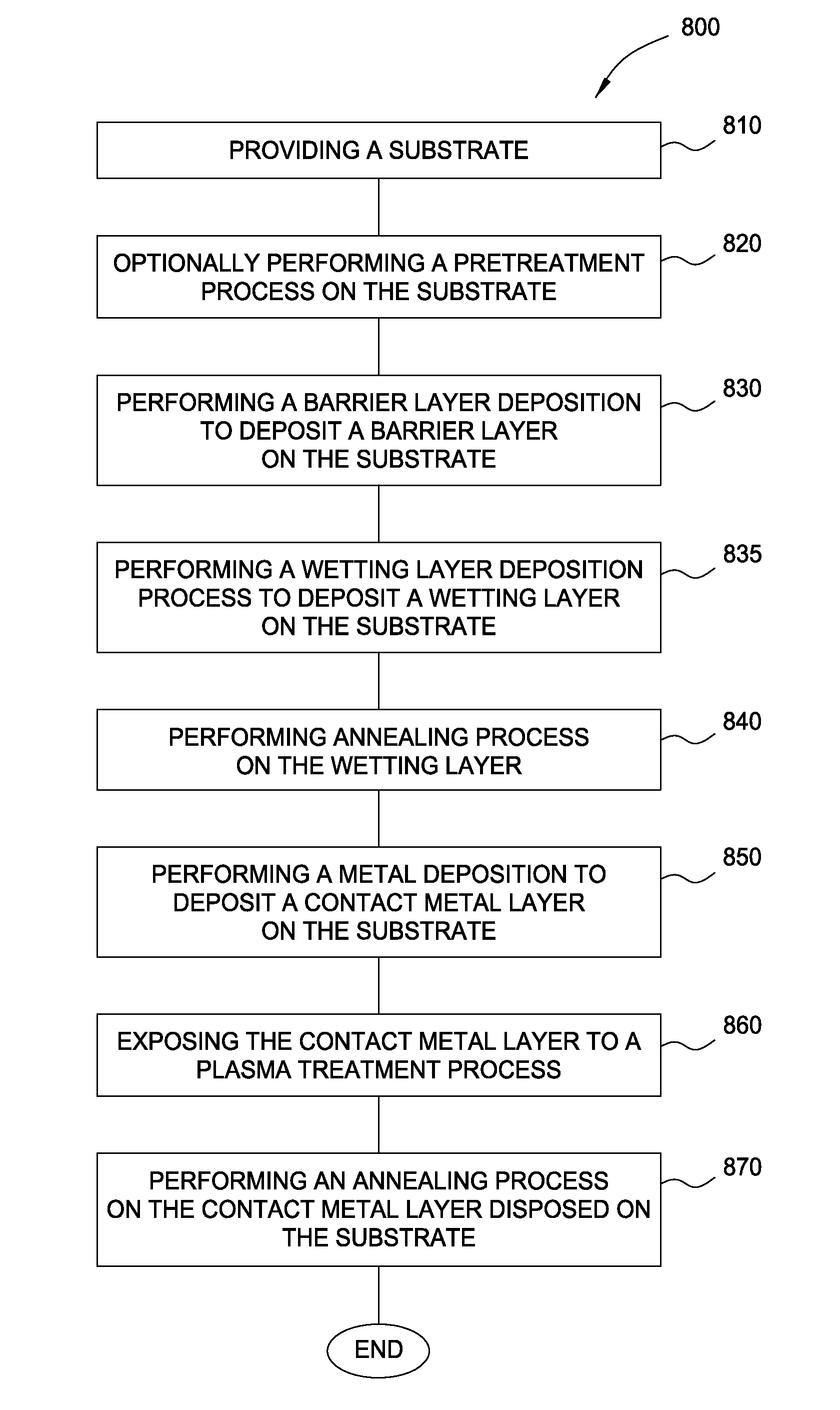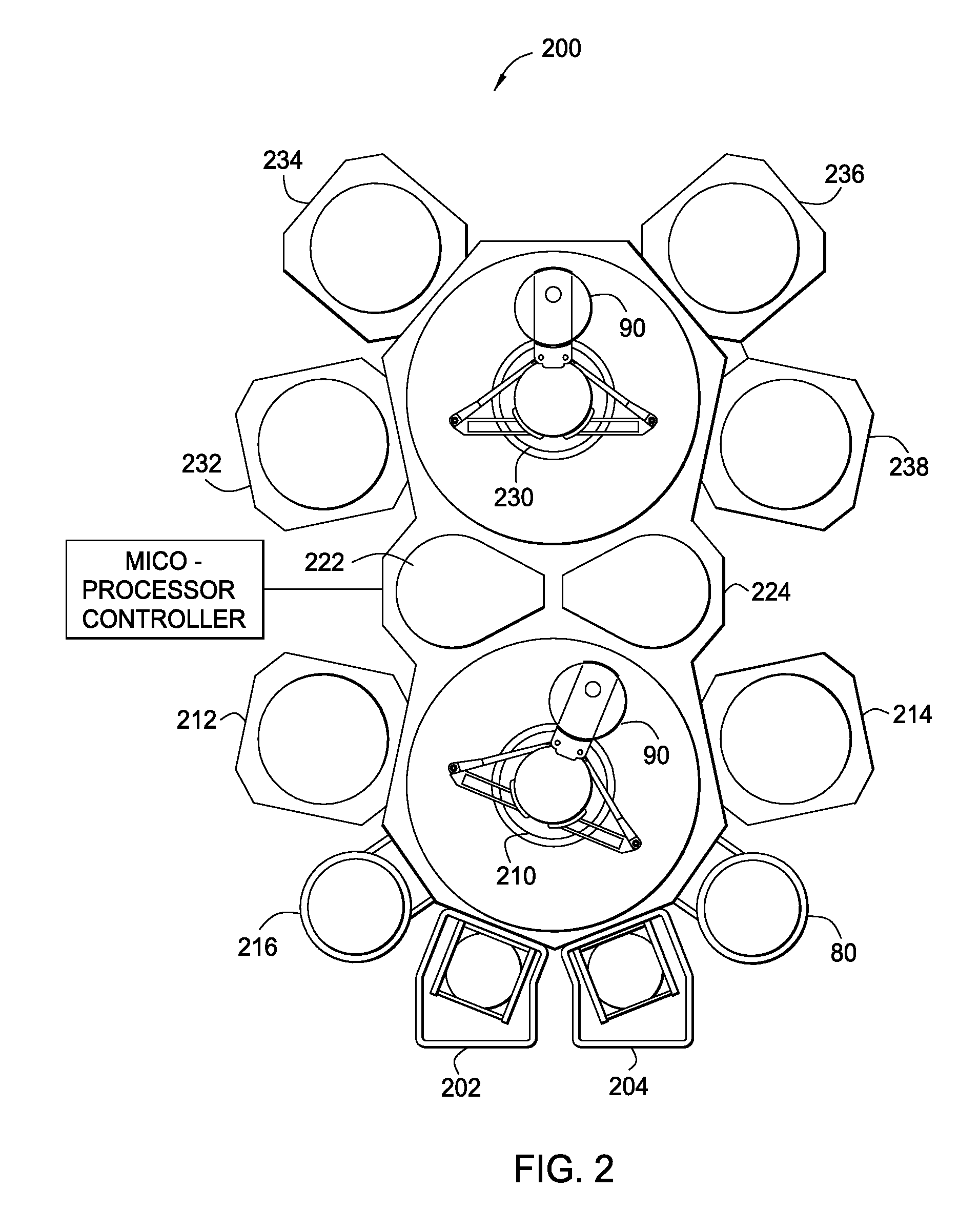Method of enabling seamless cobalt gap-fill
a cobalt gap and cobalt technology, applied in the direction of semiconductor devices, semiconductor/solid-state device details, electrical equipment, etc., can solve the problems of device shorting or poor interconnection formation, poor step coverage of contact metal layer deposited using a conventional pvd process, and void formation within the via or trench,
- Summary
- Abstract
- Description
- Claims
- Application Information
AI Technical Summary
Benefits of technology
Problems solved by technology
Method used
Image
Examples
Embodiment Construction
[0022]Embodiments of the present invention provide gap-fill utilizing metallic CVD processes (e.g., cobalt CVD processes) resulting in a potential low contact resistance (Rc) one-material solution for contact fill. The CVD films deposited according to embodiments described herein have conformal step coverage and low surface roughness. Further, the embodiments demonstrated herein demonstrate a process for filling contact holes of a semiconductor device with no seam formation.
[0023]In one embodiment, a method for depositing a contact metal layer over a substrate is provided which includes exposing the substrate to a cobalt precursor gas and hydrogen gas to selectively form a portion of a seamless gap fill cobalt layer within a feature, and exposing the cobalt layer to a plasma and a reagent, such as nitrogen, ammonia, hydrogen, an ammonia / nitrogen mixture, or combinations thereof during a post-treatment process.
[0024]As will be explained in greater detail below, a contact metal layer ...
PUM
| Property | Measurement | Unit |
|---|---|---|
| diameter | aaaaa | aaaaa |
| diameter | aaaaa | aaaaa |
| diameter | aaaaa | aaaaa |
Abstract
Description
Claims
Application Information
 Login to View More
Login to View More - R&D
- Intellectual Property
- Life Sciences
- Materials
- Tech Scout
- Unparalleled Data Quality
- Higher Quality Content
- 60% Fewer Hallucinations
Browse by: Latest US Patents, China's latest patents, Technical Efficacy Thesaurus, Application Domain, Technology Topic, Popular Technical Reports.
© 2025 PatSnap. All rights reserved.Legal|Privacy policy|Modern Slavery Act Transparency Statement|Sitemap|About US| Contact US: help@patsnap.com



